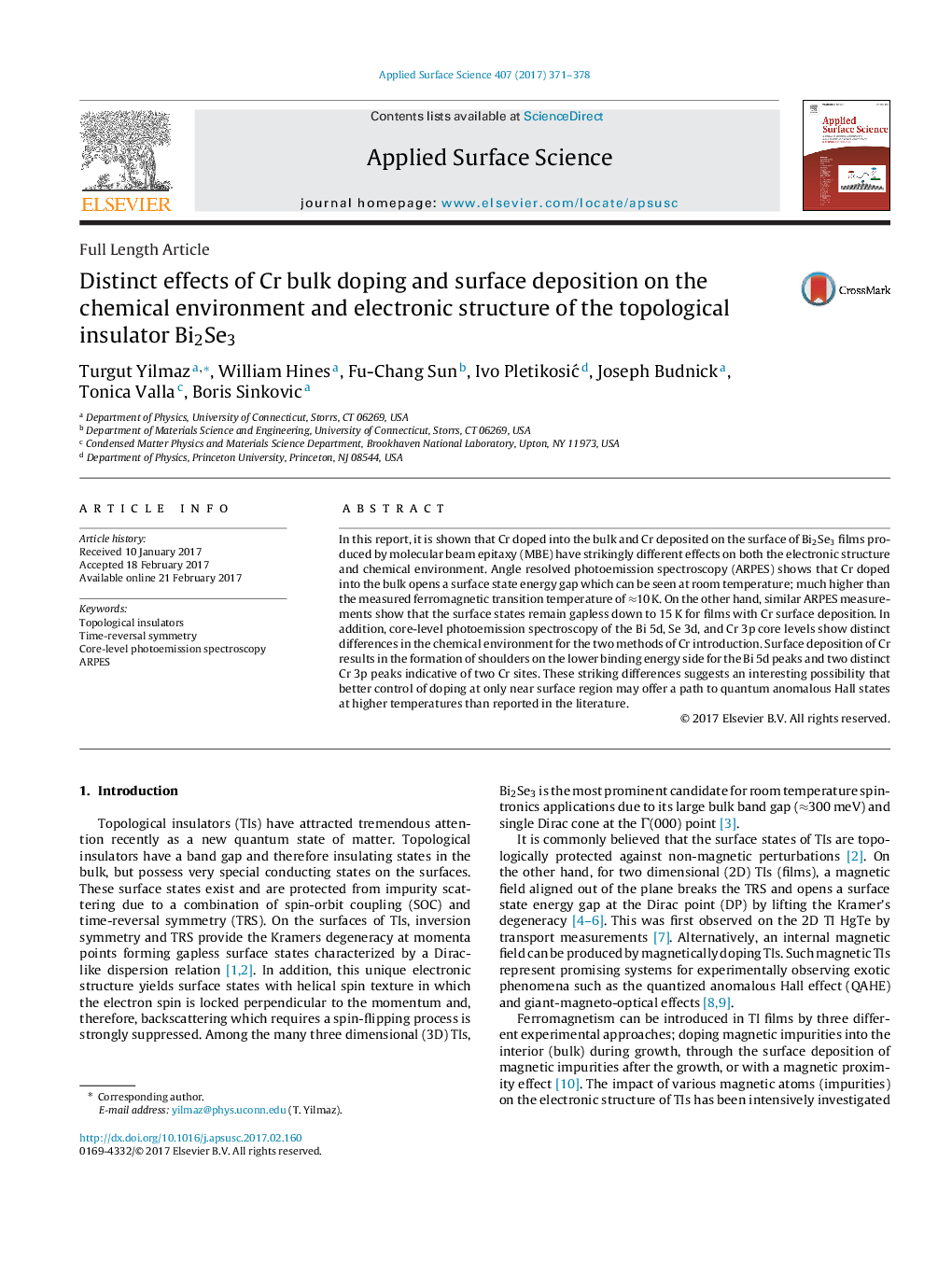| Article ID | Journal | Published Year | Pages | File Type |
|---|---|---|---|---|
| 5351461 | Applied Surface Science | 2017 | 8 Pages |
Abstract
In this report, it is shown that Cr doped into the bulk and Cr deposited on the surface of Bi2Se3 films produced by molecular beam epitaxy (MBE) have strikingly different effects on both the electronic structure and chemical environment. Angle resolved photoemission spectroscopy (ARPES) shows that Cr doped into the bulk opens a surface state energy gap which can be seen at room temperature; much higher than the measured ferromagnetic transition temperature of â10Â K. On the other hand, similar ARPES measurements show that the surface states remain gapless down to 15Â K for films with Cr surface deposition. In addition, core-level photoemission spectroscopy of the Bi 5d, Se 3d, and Cr 3p core levels show distinct differences in the chemical environment for the two methods of Cr introduction. Surface deposition of Cr results in the formation of shoulders on the lower binding energy side for the Bi 5d peaks and two distinct Cr 3p peaks indicative of two Cr sites. These striking differences suggests an interesting possibility that better control of doping at only near surface region may offer a path to quantum anomalous Hall states at higher temperatures than reported in the literature.
Related Topics
Physical Sciences and Engineering
Chemistry
Physical and Theoretical Chemistry
Authors
Turgut Yilmaz, William Hines, Fu-Chang Sun, Ivo PletikosiÄ, Joseph Budnick, Tonica Valla, Boris Sinkovic,
